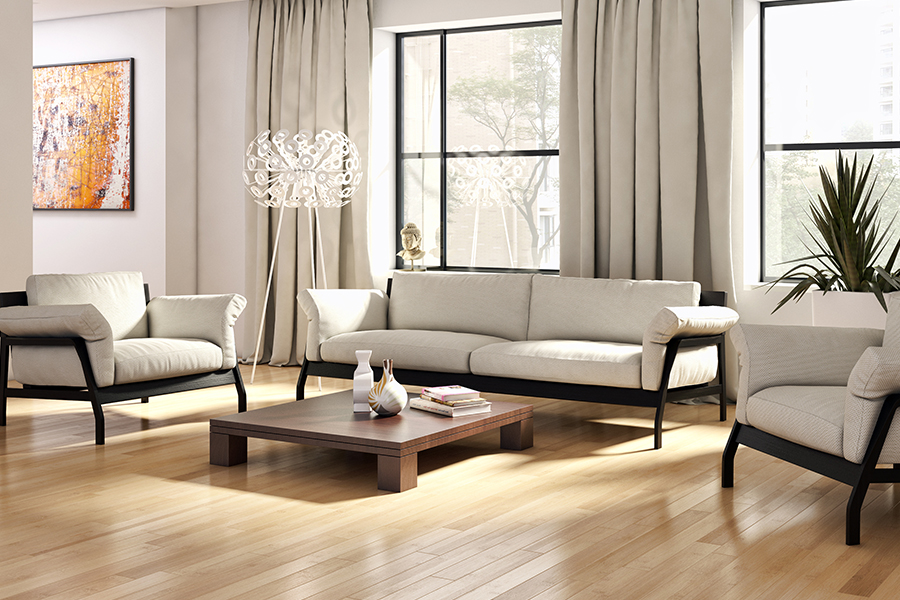
Many consumers are under the impression that solid hardwood Flooring Waldorf Md is superior to engineered hardwood flooring and may even refuse to consider engineered flooring for their home. Having spent 25 years as a flooring contractor and the past 4 years as a retailer of both engineered and solid hardwood flooring, I have found that there are a lot of misconceptions about both types of floors. I would like to share the following information and my experience so that you can make an educated decision about the best floor for your project.
Before I begin my comparison of engineered and solid floors, let us first clear up the misconception that engineered flooring is the same as laminate flooring (ie-Pergo.) More than a few people walk into my showroom with this idea, which is not true. Laminate flooring is not real wood, engineered flooring is. The surface layer of laminate flooring is a photograph of wood grain on paper impregnated with melamine, not real wood. The top layer (also called wear layer) of engineered wood flooring consists of (real!) high-quality wood. Engineered hardwood floors are comprised of multiple layers of wood, which are cross-banded for stability and glued onto a plywood base.
Solid Flooring: Pro’s
Solid wood floor is exactly that–a solid piece of wood from top to bottom. The thickness can vary, but generally ranges from 3/4″ to 5/16″. Solid hardwood is certainly hardwearing and resilient, and its main advantage is that it can be re-sanded several times. However, it is not necessarily superior to engineered flooring in this respect. Solid wood flooring, like engineered flooring, has a “wear layer” or layer of wood that can be sanded, and it is only a fraction of the thickness of the floor. Even though solid floors are thicker than the wear layer of engineered floors, you can only sand down so far before you would hit a nail with solid flooring. You may get one, possibly two, additional sandings with a solid floor compared to an engineered floor. This is the only possible advantage to solid flooring, in my opinion, and it does not apply in every case and usually does not outweigh the advantages of engineered flooring.
Engineered Flooring: Pro’s
Engineered floors have several advantages. Whereas solid floors are not a good choice in situations where there are high moisture levels or radiant heat systems, the construction of engineered floors makes them stable enough to withstand certain changes in temperature and moisture that might make a solid floor warp. Engineered hardwood flooring is designed to resist wood’s natural tendency to change dimensionally over time. The grain of each layer runs in opposite directions, which makes engineered floors very stable. This means that the wood will expand and contract less than solid wood flooring during fluctuations in humidity and temperature. For this reason engineered floors are a better choice for applications such as over radiant heat installations, in kitchens, bathrooms, and basements, or where a floor is needed to span two differing sub-floors like plywood and concrete.
Another advantage of engineered floors is more flexibility of installation types. Whereas solid floors can only be nailed down, most engineered floors can be nailed or stapled to a wood sub floor, or glued down to a wood sub floor or concrete slab. Only engineered floors can be floated, the only option when hardwood flooring cannot be attached to the sub-floor.
Lastly, compared to solid wood flooring, engineered flooring is a more environmentally sustainable choice, as it can yield up to four times the amount of flooring using the same amount of high quality wood.
Having said all of this, solid wood floors are certainly a fine choice for many applications. They just are not necessarily the superior choice in every case, as many people believe. When in doubt, a flooring contractor can evaluate your site conditions and advise you as to the best flooring type for your home.